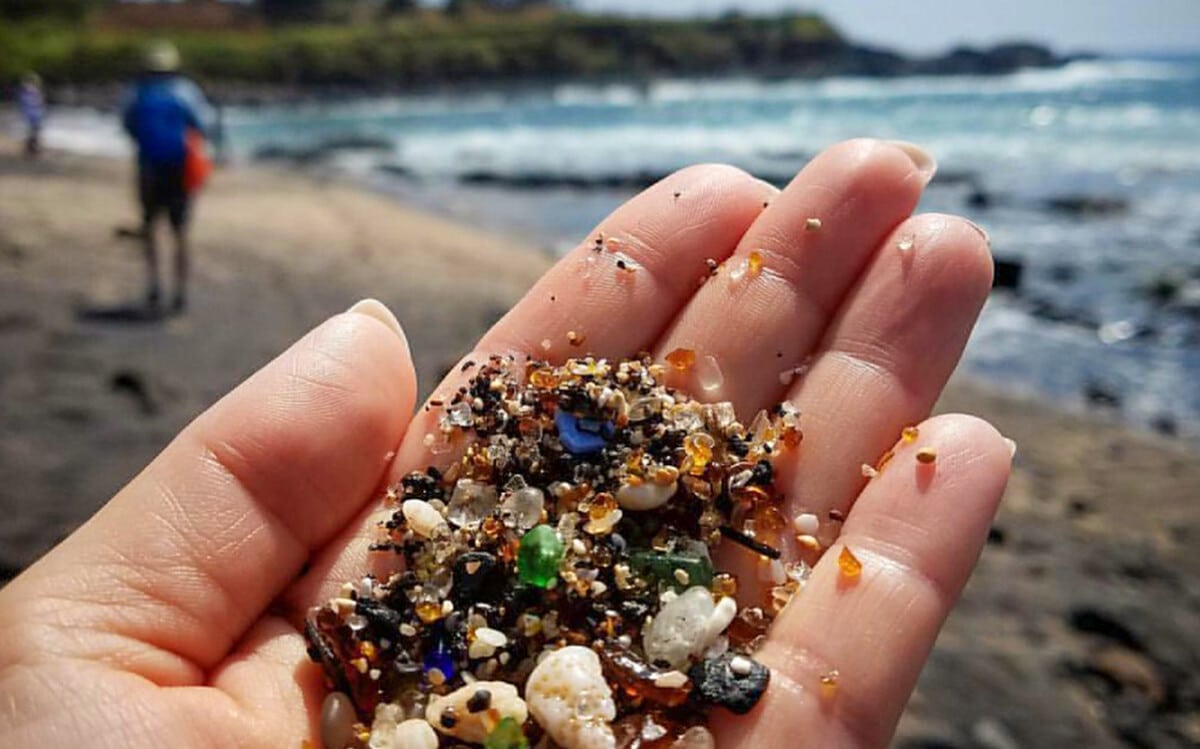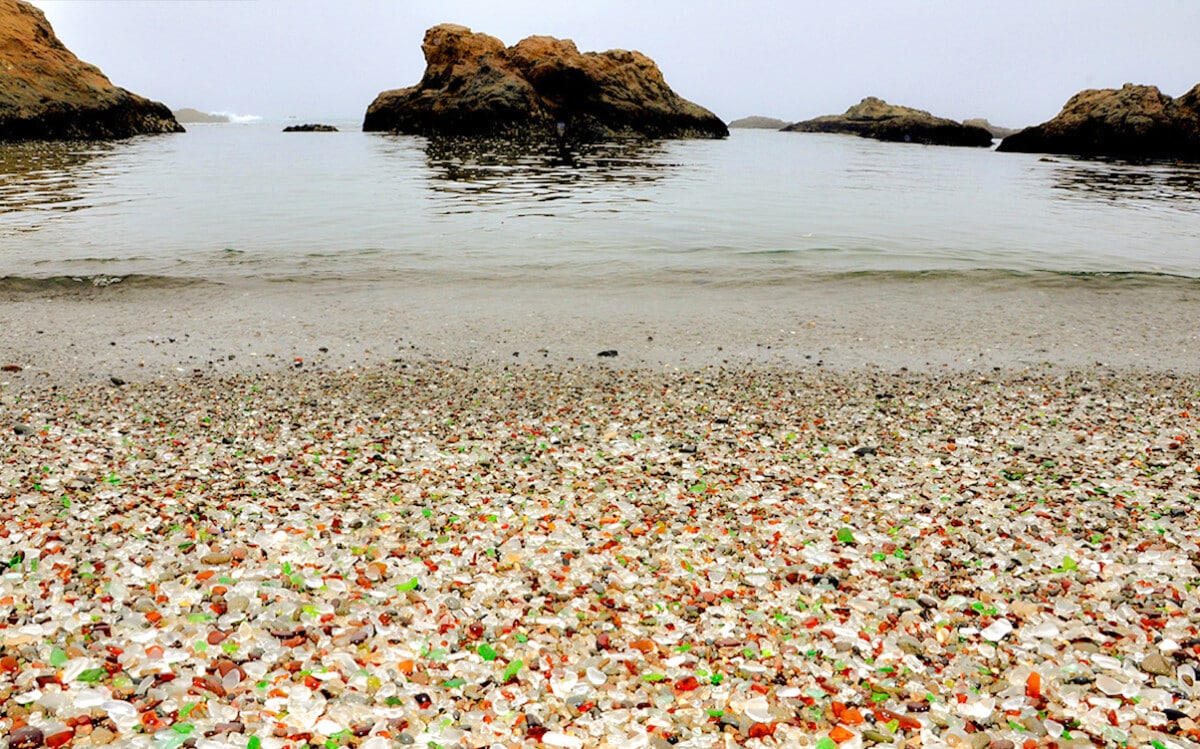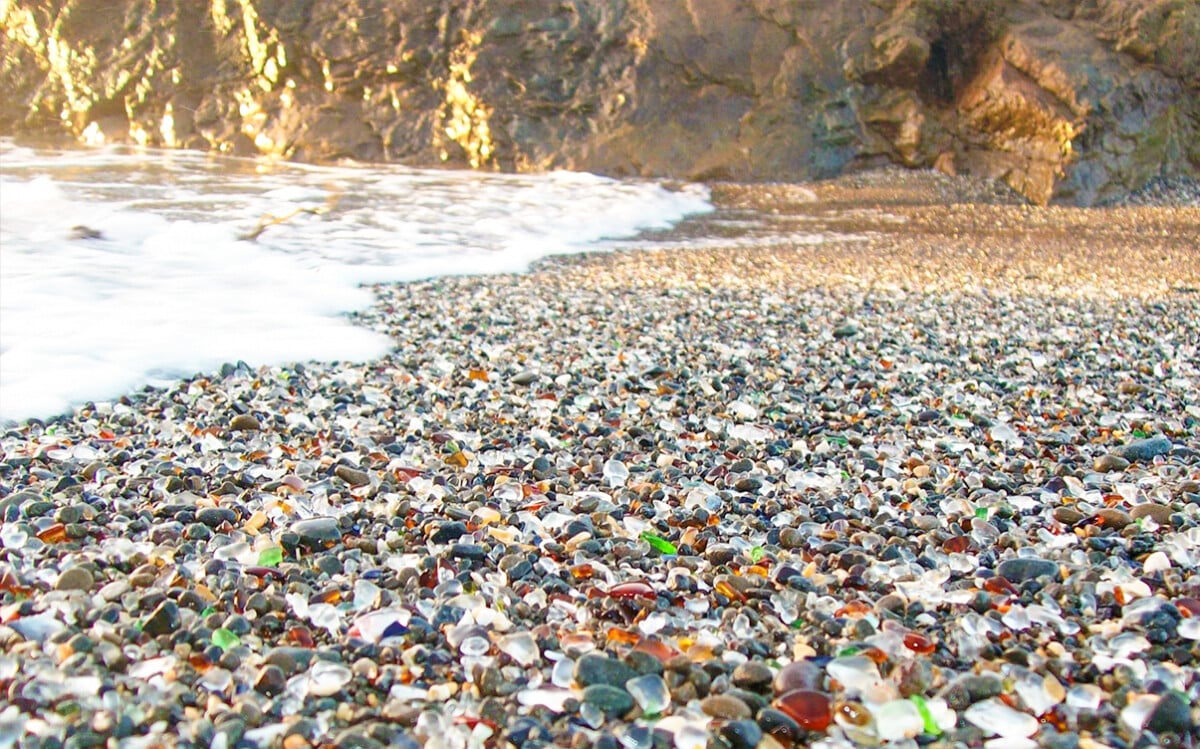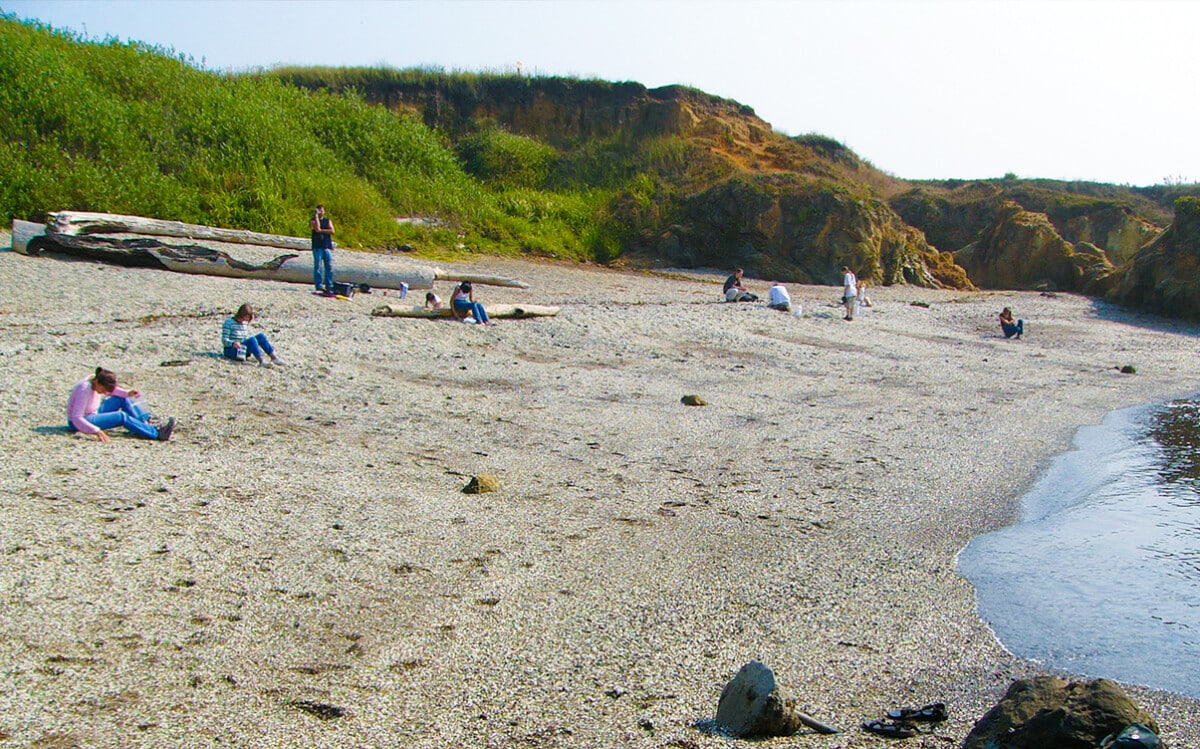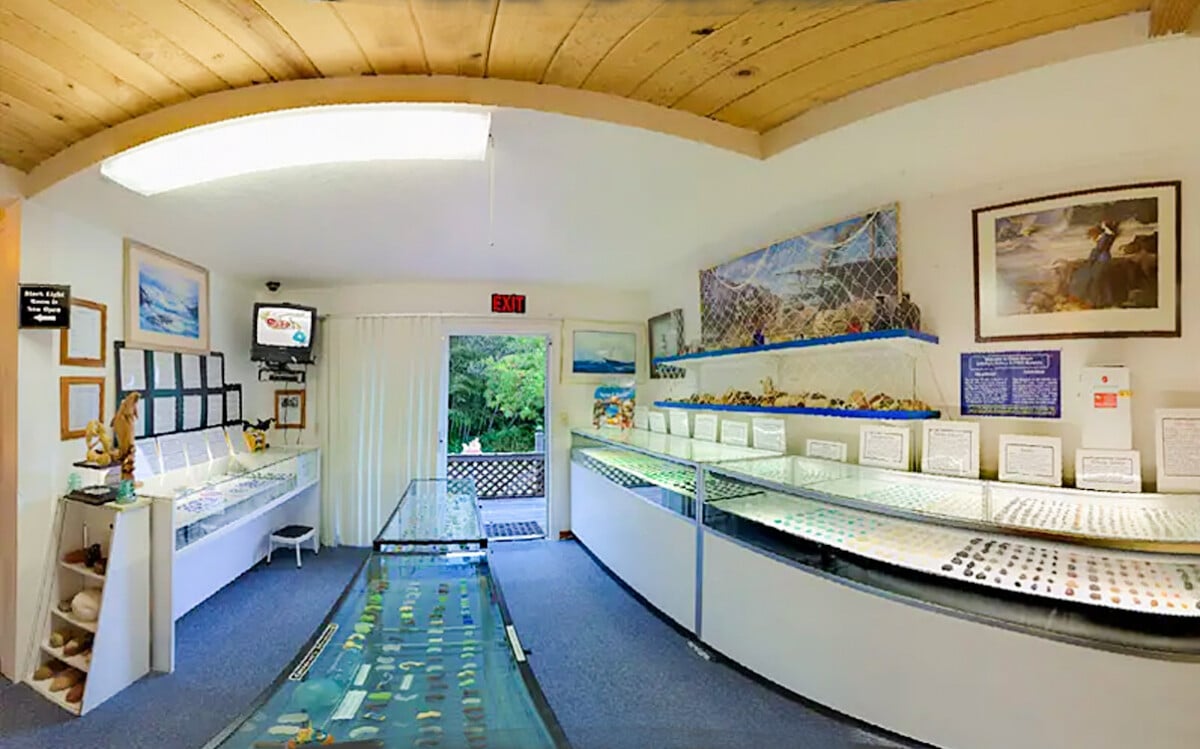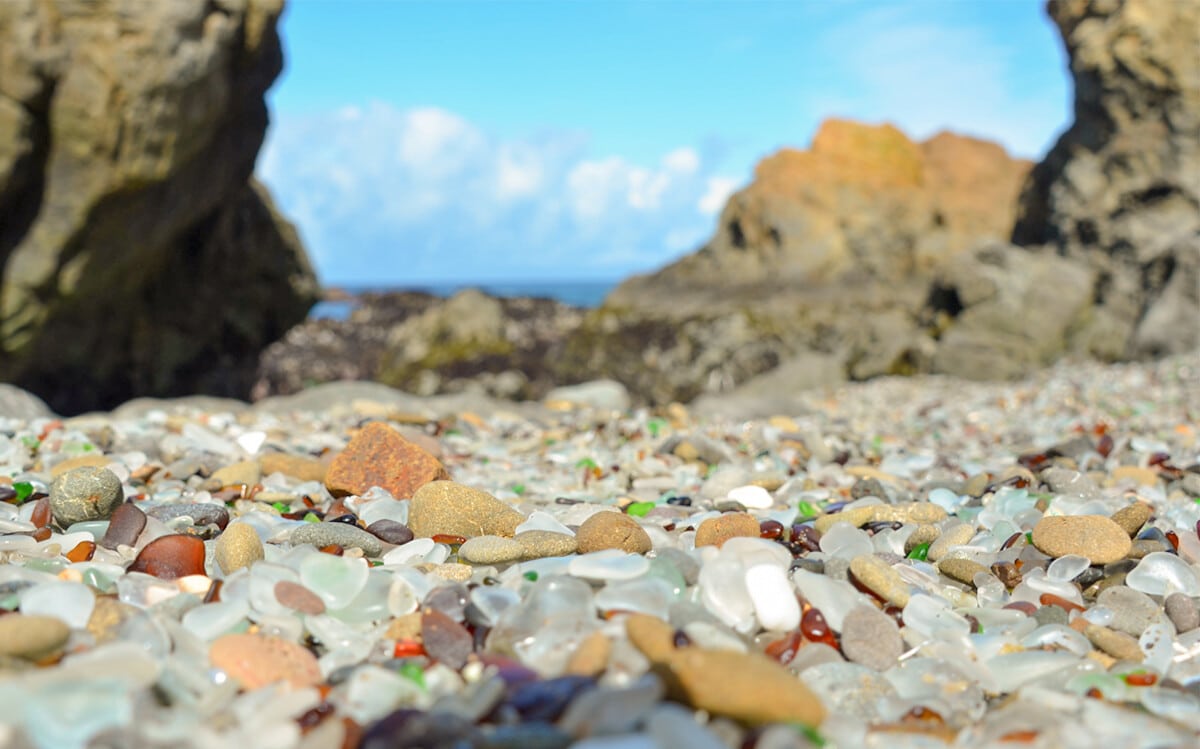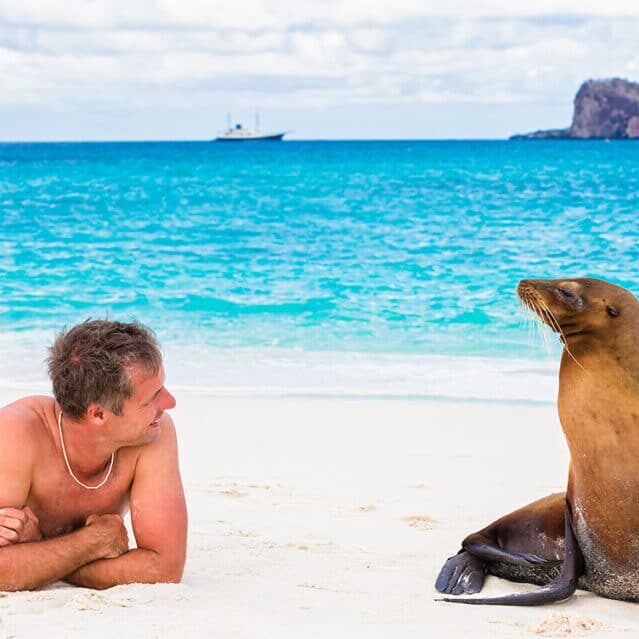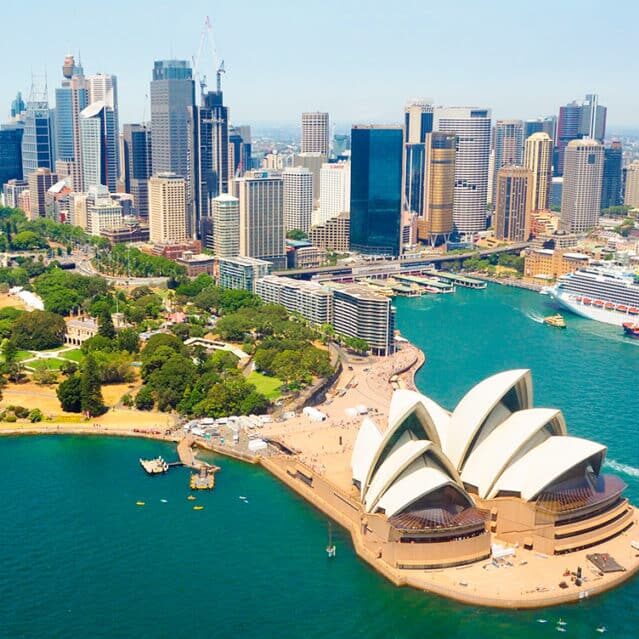Visiting Glass Beach: History, Spots and Tips to Find Sea Glass
Disclaimer: This post may contain affiliate links. Please see our Disclosure Policy and Advertiser Disclosure for details.
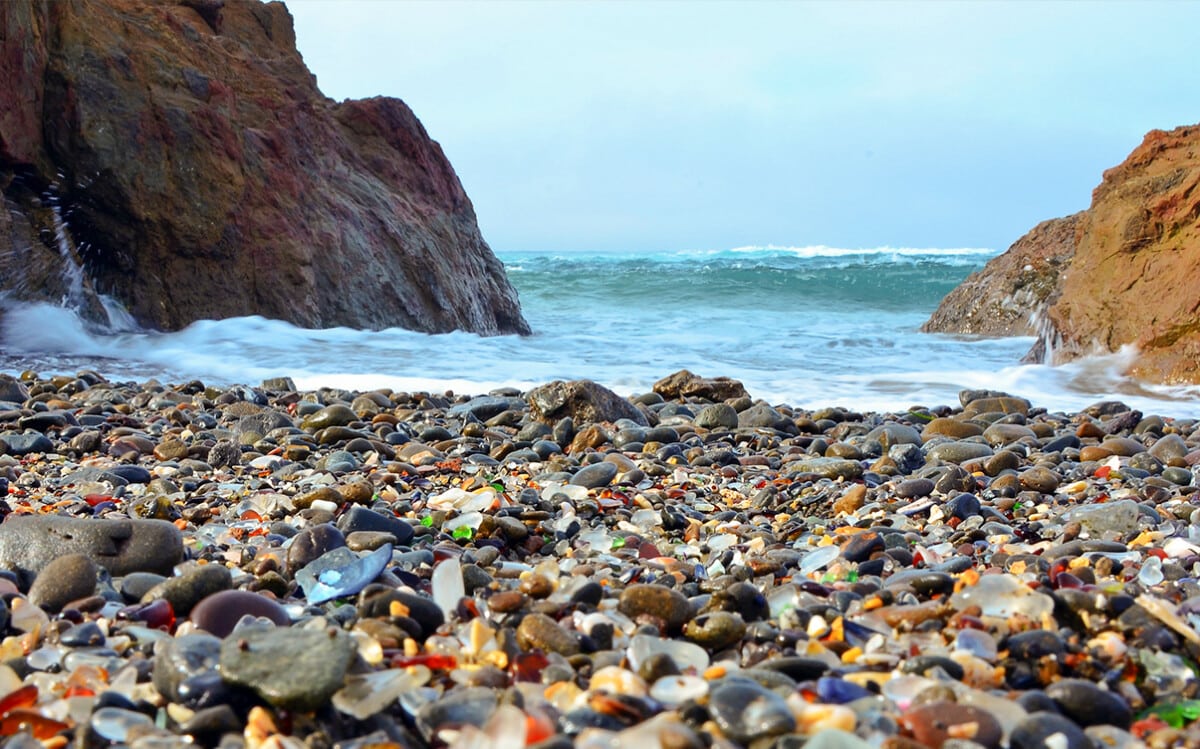
Sometimes, the effect of humanity on our oceans is depressing and devastating. Every picture of a sea turtle covered in plastic reminds us that we have an outsized impact, and it’s not always good.
Other times, though, the side effect of our presence is something beautiful.
That’s what Glass Beach is. So where is it, what’s the history of the beach, and where can you find beautiful sea glass to bring home? Let’s talk about it.
What is a Glass Beach?
When you think of a beach, what do you picture?
Depending on where you’ve lived and how much you’ve traveled, you might have a few different mental images.
For some people, it’s a picture of golden-brown sands and blue-brown waters, gentle lapping of waves on a shore, and a few people scattered across the beach.
For some people, it’s vibrant white sands, crystal-clear waters, and a crowded beach full of umbrellas, tourists, surfers, and beachcombers looking to find something cool in the sands.
For some people, it’s a rocky shore of inhospitable hills, sharp stones, and crashing waters.
For some people, it’s about the exotic experiences. The black sand beaches of Hawaii, the beaches with bioluminescent algae like the Sea of Stars in the Maldives, and other equally stunning and unique geographical features.
That’s what the glass beach is. Or rather, what the concept of a glass beach is, because there’s actually more than one around the world. In fact, there are quite a few scattered throughout the shores of various continents. We’re going to talk mostly about one specific one today, but it’s worth talking about what they are first.
In our intro, we talked about human impact on the ocean. Glass beaches aren’t natural because glass isn’t natural. For decades, before we invented plastic for bottles, jars, and other containers, we used glass to hold everything from olive oil to soda to alcohol and beyond. Sometimes, those bottles were reused, kept, and repurposed. Other times, they were discarded, broken or not.
Over a century later, there’s an entire hobby surrounding digging up colonial-era and other old homestead garbage sites, looking for bottles. But that’s on land, in forests and farmlands. That’s not the only place glass ended up.
Over the centuries, many bottles and other glass items have ended up in the water. They’re carried out to sea or tossed into the sea, whether by people on boats, people living on the shore, or some happenstance.
The ocean is a vast and complex system of currents and waves, and those waves often have break points where swirling in the waters and the carrying current deposits certain kinds of items. There was a beach in the UK that had a mysterious invasion of Garfield Phones, and there are a few beaches where Lego pieces from carrier shipwrecks have concentrated.
The same sort of phenomenon has led to glass beaches around the world. These are places where all of this glass washes ashore, broken by the rough currents and impacts, shattered into pieces ranging from the size of a palm to the size of sand. The glass is battered and worn down, chipped away, and eroded until it’s no longer sharp and jagged but smooth and rounded. It’s like gently tumbled and polished river rocks, but instead of natural rocks, it’s unnatural glass.
The result is a beautiful and surreal landscape of a beach covered not in sand, but in rocks; and not in rocks, but smooth and tumbled, glittering and bright, nuggets of crystal.
There are a bunch of glass beaches around the world, in places where glass was dumped or has accumulated from ocean currents carrying and leaving the glass on the shore.
- Kauai, Hawaii’s Glass Beach in Port Allen
- Sidney’s Glass Beach in British Columbia, Canada
- Davenport Beach in California
- Grant Park Beach in Milwaukee, Wisconsin
- Sea Glass Beach on Ireland Island, Bermuda
- Steklyashka Beach in Ussuri Bay, Russia
- Sea Glass Beach in Okinawa, Japan
- Brighton Beach in Melbourne, Australia
With sea glass beaches all over the world, which one are we actually talking about? Well, we’re looking close to home: Fort Bragg Glass Beach in California.
Where is Glass Beach?
Fort Bragg’s Glass Beach is, as you might imagine, located on the shores of California in Fort Bragg. It’s right next to the town center and a little south of MacKerricher State Marine Conservation Area. It’s quite a ways up in Northern California, on the same latitude as Reno.
It’s quite easy to find, and less than a quarter mile walk from the town center, with free parking and free admission.
What is the History of Fort Bragg’s Glass Beach?
Fort Bragg’s Glass Beach has more or less the same history as most glass beaches; at one point, a hundred years or so ago, it was a literal dump. Residents of Fort Bragg and the surrounding area would use it as a garbage dump, a place to toss their trash, including everything from cars and tractors to appliances to glass. Lots, and lots, of glass. The place was even referred to as “The Dumps” by residents at the time.
Note: There are actually three glass beaches in Fort Bragg, referred to as the three different sites. Each was active as a dump during a different time period, from the great earthquake in 1906 all the way to the closure of the practice in 1967. The original, pre-1943 site isn’t legally accessible on foot and must be accessed from the water.
Many items have rusted away. Lighter items washed away, while heavier items stayed on the beach. Cleanup efforts and recycling attempts have removed things like automobile husks and potentially dangerous items. The area was closed as a dump in 1967 by the California State Water Resources Control Board, which then took a keen interest in protecting both wildlife and natural water resources. Over the subsequent half-century, various cleanup efforts have stripped almost everything from the beach except the glass, pottery, and other worn-down minerals that now make up the bulk of the beach.
Unfortunately, once it became clear that the glass was worn down into gorgeous crystals instead of sharp shards, the glass beach very quickly became a tourist attraction. People would come from all over the state – and country – to hunt for beautiful crystals and other pieces of sea glass. Since colored glass is the most prized, while clear glass wasn’t, the beach was slowly stripped of most of its vibrant colors. A large part of what remains is white, clear, or a shade of dirty gray or black. Sparkles of color can still be seen – and a sunset over the beach can be a gorgeous display – but it’s nowhere near as vibrant as it used to be.
Tips for Visiting Fort Bragg’s Glass Beach
If you’re interested in paying a visit to California’s most accessible glass beach, it’s really quite easy to do. Fort Bragg isn’t a huge town, so you can easily stop in, find some accommodations in an Airbnb or local motel, and plan a day of admiring the beach.
If you’re looking to see the most interesting, vibrant pieces of sea glass, you need to time your visit. Try to aim for a visit just after high tide when the water is receding after having washed up new glass. If you’re particularly ambitious, try to time it for after a storm; the more ferocious, the better. Storm-driven waves churn up the beach and bring more glass from further out in the water up onto the beach, and the turnover gives you the best chance to find interesting, colorful pieces of glass.
There are also a variety of other interesting things to do nearby. The aforementioned marine conservation area a bit to the north is fun to explore, and a bit closer to the beach is a range of coves with an interesting mixture of scattered sea glass and natural rocks.
If you don’t mind crowds and want to dig deeper, there’s also the Sea Glass Festival. Fort Bragg hosts this event on Memorial Day weekend every year. Local artisans and artists show off glassworks and artwork, crafts folk make wearable creations out of local sea glass, and it’s an overall celebration of what makes Fort Bragg unique.
It’s also important to say, make sure to learn and follow the local laws. In particular, the original site is generally closed to the public, and if you try to visit it, you’ll very likely be spotted and reported for trespassing. Fort Bragg takes this pretty seriously, and the last thing you want to do is be arrested on your vacation! More than a few people have been told to leave town and stay away from the beaches on probation for years. Don’t be one of them.
Fort Bragg’s Sea Glass Museum
Worth giving its own spot, Fort Bragg also has a sea glass museum. This museum was opened up by a retired sea captain named Cass Forrington back in 2009 as a way to preserve and tell the history of the area and show off the most unique pieces of sea glass ever found on the beaches nearby.
There are over 3,000 pieces of sea glass on exhibit in the museum. They’re categorized and arranged by color and by their history. Some of them are even identifiable, and it’s possible to see the original glassware they came from; other pieces are simply beautiful, if unidentifiable. It’s easy to spend hours admiring the beautiful glass. Then, you can buy a sea glass beach puzzle on the way out for one of the more challenging jigsaws you’ll experience.
You can learn more, see pictures, find directions, and check out the hours of operation, all from the International Sea Glass Museum website here. Admission is free, so be sure to check it out if you visit!
Can You Take Home Sea Glass from Fort Bragg’s Glass Beach?
Unfortunately, the answer here is a firm no.
For decades, people came and went, and some would sneak out a few pretty pieces of glass, while others would fill buckets to admire or use in their own artwork or projects. Some would even take them to resell later elsewhere.
As you might expect, this has resulted in a picked-over beach. While it’s not a natural wonder (since it was made by humans, inadvertently), it’s still not something anyone, local or otherwise, wants to see destroyed.
That means it’s generally quite illegal to take glass from the beach. You can explore, you can dig around, you can pick up interesting pieces, gather pieces of a color and make arrangements on the beach, take all the photos you like, and admire it all… in place. But the moment you decide to fill your pockets and head out, that’s when you’re breaking the law.
As firm proponents of Leave No Trace, we’re the type to admire a beach and leave it the way we found it. After all, a place like Glass Beach is rare and beautiful and should be preserved for as long as it lasts before the steady beat of waves breaks the glass into sand and returns it to nature.
If you want sea glass, you have a few options.
- Go to some of the local shops and artisans who make items out of the sea glass. The local government allows some limited harvesting of glass to support the local industry, and this is the only legal way to obtain the glass as an outsider today.
- Visit other glass beaches around the world that don’t have the same laws. Fort Bragg’s glass beaches are the most concentrated in the world, but they’re also protected. Of course, we don’t recommend picking over other beaches either, or the same thing is likely to happen.
- Hunt for sea glass on other beaches. Any beach with a rocky shoreline has the potential for glass to be washed ashore, broken up, and weathered down into crystals. It’s much less common than on a glass beach, but no one is going to stop you.
Otherwise, just visit the Sea Glass Museum and admire it in place, stroll the beaches to see it in nature, and leave satisfied with the experience. It’s definitely worth a visit, even if you can’t take a piece of it home with you.
You may also enjoy:

